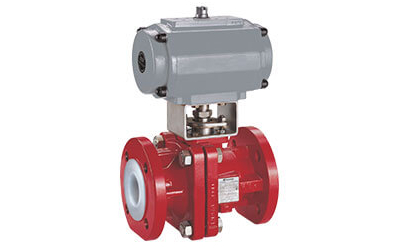To perform as intended, industrial fluid systems must be planned and installed with the proper components. Valves play a vital part in this, allowing operators to adjust system fluid flow to best meet the demands of the application.
Fluid system design may be complicated, necessitating several considerations. It is not always obvious which valve is best suited to your application. Do you need to restart the flow? Control the flow direction? Control the flow rate? Or do you require overpressure protection for your system?
In this piece, we will look at many types of industrial valves and provide advice to help you choose the best one for your needs.
Step 1: Decide your applications for the valve
The fluid under consideration should be categorised as follows:
- Liquid
- Gas
- Steam
- Slurry
- Solids
Fluid and slurry properties and conditions must be carefully identified since they are frequently the most important variables in selecting the appropriate type of valve.
- Clean Service
- Dirty Service
- Slurry Service
- Solids Service
- Hazardous & Flammable Service
- Corrosive Service
- Viscous Service
- Fouling Service
- Solidifying Service
Step 2: Select the type of industrial valve you need
● Flow Regulation Valves These valves aid in adjusting flow through a system, offering functions ranging from simple control to precision metering. Needle and butterfly valves are often used to regulate flow and, if necessary, provide on/off functionality. The orifice size, stem type, and stem position, which are regulated by rotating the valve handle, will affect flow.
● Directional Flow Valves This valve function guarantees that flow is directed in the desired direction and has the ability to modify the flow direction in the system. For directional control, check valves and multi-port ball valves are widely utilised. Importantly, while altering the flow, directional valves give on/off functionality; they do not throttle flow.
● Overpressure Protection Valves This feature prevents system pressure from exceeding a preset limit. Most typically utilised here are relief valves and rupture discs. Relief devices are critical in any system that runs under pressure, serving as the last line of protection against overpressure.
Relief valves can be programmed to open automatically at a specific pressure level. They can assist protect your facility while enabling production to continue in the event of overpressure.
● Excess Flow Valves Excess flow valves help to regulate the uncontrolled discharge of system media by activating when the flow through the valve reaches a specified threshold. If an excess flow condition occurs downstream, the valve’s poppet quickly advances to the tripped or completely forward position, effectively preventing the majority of the uncontrolled discharge of system media.
Another critical issue to establish from the start is whether you require a valve that seals in both ways (for example, a soft seated centric butterfly valve) or a valve that only has to seal in one direction (Ex. double eccentric butterfly valve)
When working on replacement projects, the option is simple because the existing valves are generally replaced with the same kind.
TIP: Catalogues from reputable valve manufacturers, such as IDEX India, are an excellent source of information on various types of valves and their uses. They usually identify the primary applications for each type of valve so that you can make an educated selection.Step 3: Choose the right size of the valve
A valve is often installed in a piping system when the pipe size is already known. It is simple in this scenario since the valve size is the same as the pipe size. Nonetheless, there are some variables that can alter the size of the valve, such as:
– The maximum allowable pressure decrease (if any)
– Maximum Flow Rate (if any)
These two criteria must be addressed while determining the size of the valve. In some uncommon instances, the valve size may be greater than or less than the pipe size (which can be an important cost-saving factor).
TIP:
Consider that many valve types, such as globe valves and ball valves, have two market options: full bore or regular bore (Reduced bore). To pick the best one, you must first determine whether there is a maximum permitted pressure drop criterion.
As an example, if you have a valve at the bottom of a pipe that is only used to drain water, the pressure drop may be minimal, and you can utilise a smaller bore valve. However, having a valve in a steam system that provides steam to a turbine and pressure drop requirements may be critical for the turbine’s operation.
Step 4: Choose the right pressure class of valves
A valve’s pressure-temperature rating is essentially the maximum pressure the valve is intended to bear at a given temperature, and it varies depending on the material of construction.
The body subassembly can bear less pressure as the process temperature rises.
Ask the following questions:
- What is the maximum pressure that the valve must withstand?
- What is the maximum, normal, and lowest flow rates’ upstream and downstream pressures?
- Is the valve continuously performing at or near the system’s maximum design pressure and temperature?
- Do the system’s peak pressure and temperature occur at the same time? Are these circumstances only present when the valve is open?
Valves are essential mechanical (and occasionally electro-mechanical) devices for regulating fluid flow via pipes or tubes. Many factors must be considered while selecting the best type of economic valve for a certain fluid service.
Valve selection might be difficult, but it does not have to be. Following a short checklist to ensure that all critical key points are examined throughout the choosing process is a smart first step.
If you are lacking certain information, such as “material resistance,” contact your trusted valve partner, such as IDEX India a leading industrial valve manufacturer in India.
Last but not least, the time spent selecting the proper valve is really a wise investment! Many valve difficulties on manufacturing sites are caused by poor and incorrect valve selection.
